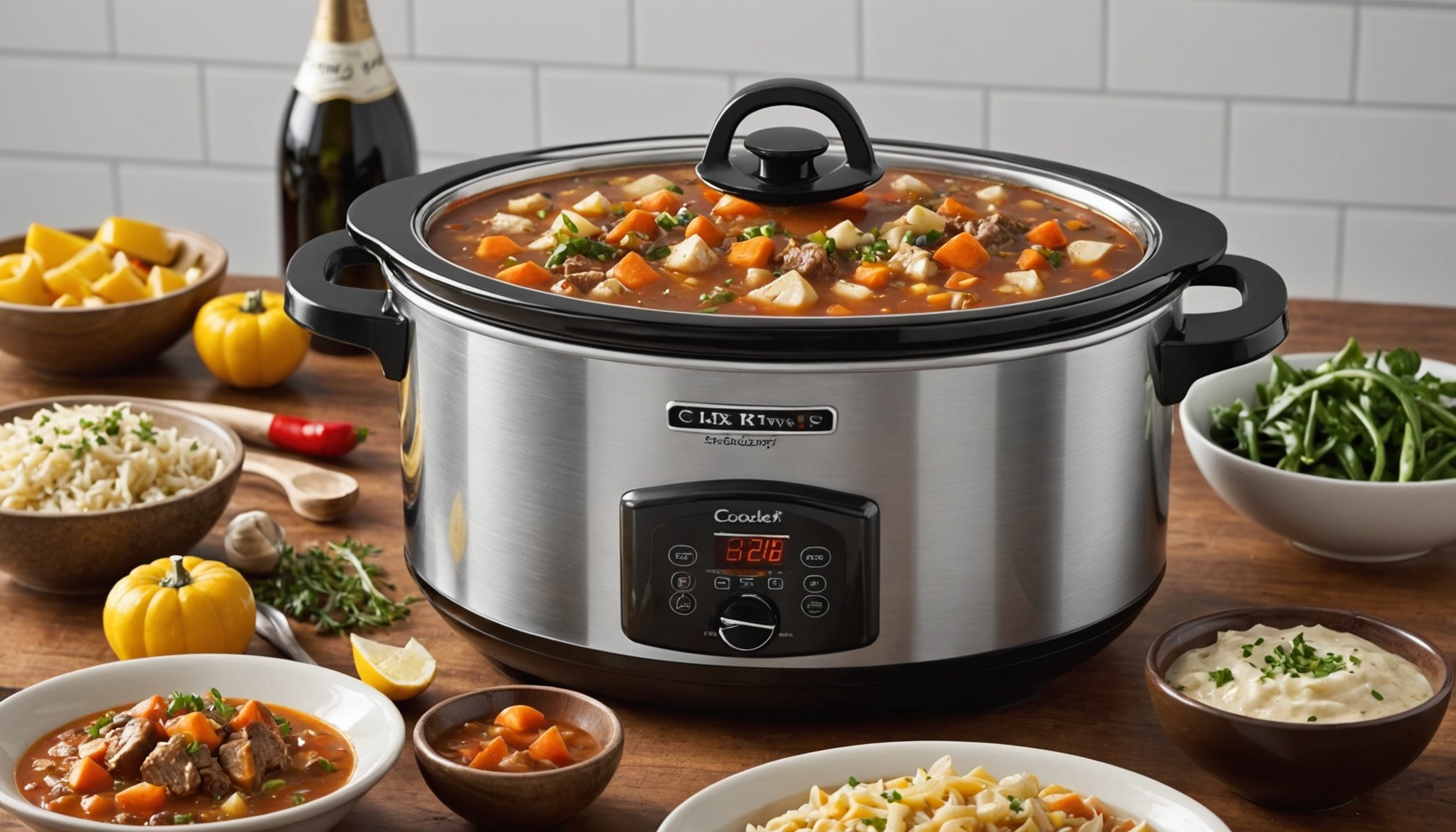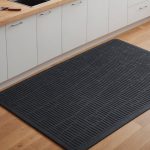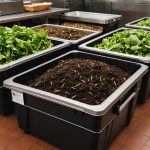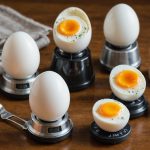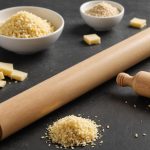Tired of bland, high-calorie meals? The right slow cooker can transform your cooking experience. Whether you're aiming for weight loss or simply a healthier lifestyle, crafting delicious low-calorie soups and stews has never been easier. Discover which slow cooker model stands out for its efficiency, features, and ultimate flavor enhancement. Get ready to enjoy hearty, guilt-free dishes that are simple to make and rich in taste! This guide will help you make an informed decision for your kitchen.
Overview of Slow Cookers for Low-Calorie Cooking
Exploring the intersection of convenience and healthy eating.
Also read : Boost Your Hydration Goals: The Ideal Water Dispenser Design for a Diet-Friendly Kitchen
The Importance of Slow Cooking in Meal Prep
Slow cookers are a game-changer for those seeking to adopt healthy eating habits. They offer a convenient way to prepare low-calorie meals without sacrificing taste. By cooking food slowly at a low temperature, nutrients are preserved, and flavors are enhanced, making it easier to stick to a nutritious diet.
Benefits of Low-Calorie Diets
Adopting a low-calorie diet can be beneficial for weight management and overall health. It helps reduce the risk of chronic diseases and supports maintaining a healthy weight. Slow cookers simplify this process by allowing you to prepare meals in advance, ensuring you always have healthy options ready.
In the same genre : Best Kitchen Seating Options to Promote Mindful Eating: A Guide to Thoughtful Choices
How Slow Cookers Aid in Weight Management
Slow cookers are particularly effective for weight management. They enable the preparation of low-calorie dishes that are both filling and satisfying. By incorporating more vegetables and lean proteins, you can create meals that align with your dietary goals.
- Benefits of Slow Cookers:
- Time-efficient meal preparation
- Enhanced flavor retention
- Nutrient preservation
With slow cookers, maintaining a low-calorie diet becomes more manageable, encouraging healthier eating habits and supporting long-term weight management goals.
Top Slow Cooker Models for Low-Calorie Soups and Stews
Exploring the best slow cookers for health-conscious culinary enthusiasts.
Overview of Top-Rated Slow Cooker Models
When selecting the best slow cookers for crafting delicious low-calorie soups and stews, certain models consistently top reviews. These slow cookers are celebrated for their efficiency and ability to enhance meal preparation. They offer features that cater to both novice and seasoned cooks, ensuring a seamless cooking experience.
Key Features to Look For in a Slow Cooker
To choose the ideal soup slow cooker, consider these essential features:
- Programmable settings: Allow for precise cooking times and temperatures.
- Capacity: Choose a size that suits your household needs, typically ranging from 4 to 8 quarts.
- Removable insert: Facilitates easy cleaning and serving.
- Energy efficiency: Look for models that consume less power while maintaining performance.
Comparison of Brands and Models
Here's a concise comparison of popular stew slow cooker brands:
| Brand | Model | Capacity | Key Feature |
|---|---|---|---|
| Crock-Pot | Cook & Carry | 6 quarts | Portable design |
| Instant Pot | Duo Nova | 7 quarts | Multi-functionality |
| Hamilton Beach | Set & Forget | 6 quarts | Programmable control |
These models exemplify the best slow cookers available, each offering unique advantages to enhance your low-calorie cooking journey.
Features Enhancing Soup and Stew Preparation
Optimizing your cooking experience with the right slow cooker features.
Temperature Control and Settings
Temperature control is crucial for perfecting soups and stews. Slow cookers with adjustable settings allow you to tailor the cooking process to your needs. Whether you're simmering a broth or cooking a hearty stew, precise temperature settings ensure optimal flavor and texture. This flexibility enhances cooking efficiency, allowing you to experiment with various recipes without worrying about overcooking or undercooking.
Size and Capacity Considerations
Choosing the right size and capacity is essential for maximizing your slow cooker's potential. A 4-quart model may suffice for small households, while larger families might prefer an 8-quart option. This consideration ensures you can prepare enough servings without compromising on the quality of your soups and stews. Understanding your household's needs helps you select a slow cooker that aligns with your soup and stew preparation goals.
Programmable Features for Convenience
Programmable features add a layer of convenience to slow cooking. With options like delayed start and automatic keep-warm settings, you can set your slow cooker to begin cooking at a specific time and maintain the perfect serving temperature. These features enhance cooking efficiency, allowing you to enjoy freshly prepared meals without constant supervision.
- Key Features to Consider:
- Adjustable temperature settings
- Suitable capacity for your needs
- Programmable start and keep-warm functions
Low-Calorie Soup and Stew Recipe Suggestions
Discover delicious ways to enjoy healthy meals.
Sample Recipes for Soups
Creating low-calorie recipes for soups can be both satisfying and flavorful. Consider a healthy soup like a vegetable minestrone. Use zucchini, carrots, and spinach for a nutrient-rich base. Substitute pasta with quinoa to reduce calories while increasing protein. Another option is a creamy tomato basil soup. Replace cream with almond milk for a lighter version without sacrificing taste.
Sample Recipes for Stews
For healthy stews, try a lentil and vegetable stew. It’s packed with fiber and protein, making it a perfect choice for a low-calorie diet. Use sweet potatoes instead of regular potatoes for added vitamins. A chicken and white bean stew is another excellent choice. Opt for skinless chicken breast and add kale for an extra boost of nutrients.
Ingredient Substitutions for Healthier Options
Enhance your low-calorie recipes by making smart ingredient swaps. Here’s a list to guide you:
- Instead of cream, use Greek yogurt or almond milk.
- Choose lean proteins like skinless chicken or turkey.
- Substitute white rice with cauliflower rice or quinoa.
These substitutions ensure your healthy soups and stews are both nutritious and delicious, supporting your dietary goals effectively.
User Reviews and Ratings of Recommended Models
Insights into customer experiences and feedback.
Summary of User Experiences with Top Models
Users of top slow cooker models often highlight their satisfaction with the convenience and efficiency these appliances offer. Many appreciate programmable settings and the ability to maintain consistent cooking temperatures. Feedback frequently mentions the versatility of these models in preparing a variety of low-calorie dishes, aligning with health-conscious goals.
Pros and Cons Based on User Feedback
Customer feedback reveals several pros and cons. On the positive side, users commend the ease of cleaning, especially with removable inserts. The energy efficiency of certain models is another praised feature. However, some users note that larger models can be cumbersome in smaller kitchens. There are occasional concerns about the durability of controls and displays.
-
Pros:
-
Easy cleaning
-
Consistent temperature control
-
Versatile cooking options
-
Cons:
-
Size may be bulky
-
Durability issues with controls
Ratings from Reputable Sources
Product ratings from reputable sources often reflect these user experiences. Models like the Instant Pot Duo Nova and Hamilton Beach Set & Forget consistently receive high marks for their programmable features and capacity options. Such ratings reinforce the customer feedback, helping potential buyers make informed decisions about their slow cooker purchases.
Tips for Selecting the Right Slow Cooker
Choosing a slow cooker tailored to your needs can enhance your culinary experience.
Factors to Consider When Purchasing
When choosing a slow cooker, consider your household size and cooking needs. A larger capacity is ideal for families, while a smaller model suits singles or couples. Evaluate the programmable features for convenience, such as delayed start and automatic keep-warm functions. These features streamline meal preparation and ensure your food is ready when you are.
Common Mistakes to Avoid
Avoid common pitfalls when purchasing a slow cooker. One frequent error is selecting a model based solely on price, neglecting essential features. Ensure the slow cooker has a removable insert for easy cleaning. Additionally, check the energy efficiency to prevent high electricity bills. Another mistake is ignoring user reviews, which provide valuable insights into the product's performance and durability.
Recommendations Based on Cooking Needs
Tailor your choice to your cooking needs. For versatile cooking, opt for models with multiple settings. If you frequently prepare low-calorie meals, prioritize models with precise temperature control.
- Essential Features:
- Programmable settings
- Removable insert
- Energy efficiency
These tips ensure you select the right slow cooker, enhancing your culinary journey while avoiding unnecessary complications.
Cooking Techniques for Low-Calorie Soups and Stews
Enhance your meals with effective methods.
Best Practices for Slow Cooking
Slow cooking methods are ideal for crafting flavorful, low-calorie soups and stews. Begin by searing lean proteins like chicken or turkey to lock in juices before adding them to the slow cooker. This step enhances flavor without extra calories. Layer ingredients thoughtfully, placing harder vegetables like carrots and potatoes at the bottom, as they require longer cooking times.
Techniques for Enhancing Flavor Without Added Calories
Maximize flavor by incorporating herbs and spices. Fresh herbs such as thyme or rosemary add depth. Use spices like cumin or paprika for a warm, rich taste. Avoid excess salt; instead, rely on aromatic vegetables like onions and garlic. These techniques ensure robust flavor profiles without calorie-heavy ingredients.
- Flavor Enhancers:
- Fresh herbs
- Aromatic vegetables
- Spices
Adjusting Cooking Times for Different Ingredients
Different ingredients have varied cooking times. Vegetables typically need less time than proteins. To prevent overcooking, add quick-cooking ingredients like spinach or peas in the last 30 minutes. Adjusting cooking times ensures all components retain their texture and nutritional value, resulting in perfectly cooked low-calorie soups and stews.
Health Benefits of Low-Calorie Diets
Understanding the positive impact of a low-calorie diet on your health.
Overview of Health Benefits
Adopting a low-calorie diet offers numerous health benefits. It supports weight loss, helping individuals achieve and maintain a healthy weight. This dietary approach is also linked to a reduced risk of chronic diseases such as diabetes and heart disease. By focusing on nutrient-dense foods, a low-calorie diet ensures you receive essential vitamins and minerals without excess calories.
Impact on Weight Loss and Overall Health
A low-calorie diet is particularly effective for weight management. It creates a calorie deficit, leading to weight loss while preserving muscle mass. This diet not only aids in shedding pounds but also improves metabolic health. Individuals following a low-calorie diet often experience increased energy levels and enhanced mental clarity.
- Key Health Benefits:
- Supports weight loss
- Reduces chronic disease risk
- Enhances metabolic health
Importance of Balanced Nutrition
While focusing on low-calorie eating, maintaining balanced nutrition is crucial. Incorporating a variety of food groups ensures that you meet your body's nutritional needs. A low-calorie diet should include lean proteins, whole grains, and a wide range of fruits and vegetables. This balance promotes overall health and well-being, making it a sustainable lifestyle choice.

